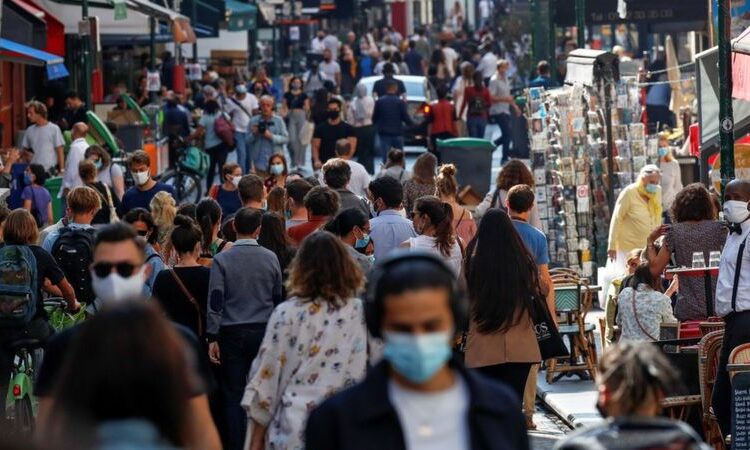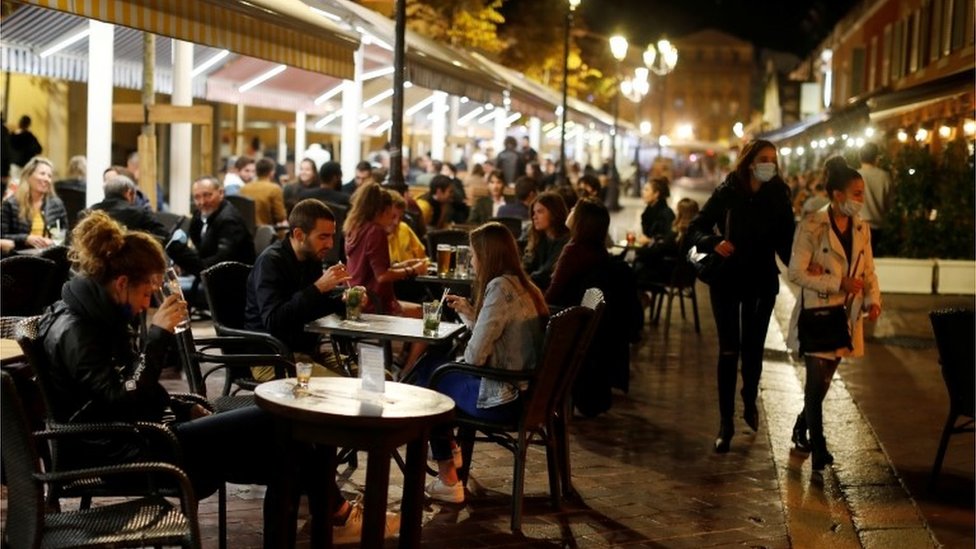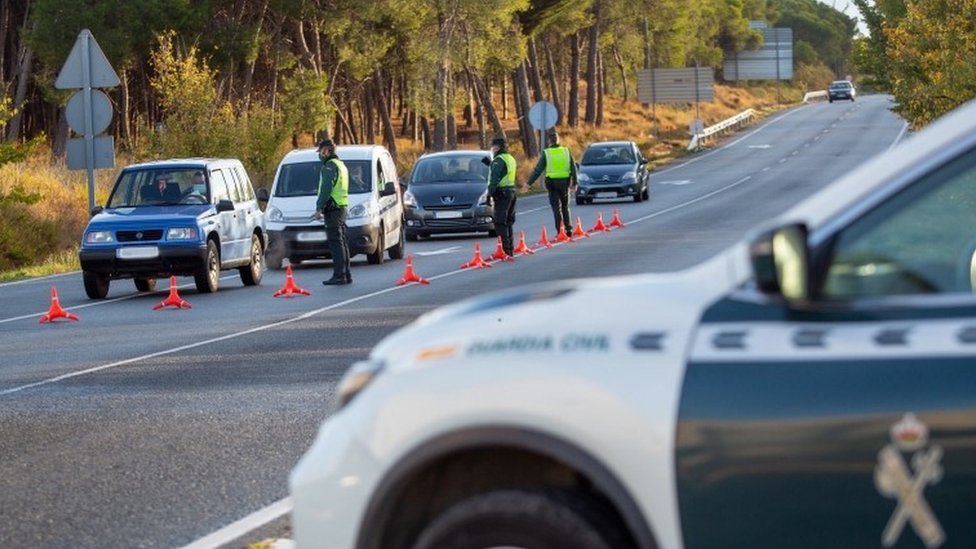
REUTERS image captionMany infectious people are in the streets without knowing it, a French hospital boss has warned
French President Emmanuel Macron says his country will be fighting the virus until at least the middle of next year as cases there surged past a million.
On Friday France recorded more than 40,000 new cases and 298 deaths. Other nations including Russia, Poland, Italy and Switzerland also saw new highs.
The World Health Organization said the spike in European cases was a critical moment in the fight against the virus.
It called for quick action to prevent health services being overwhelmed.
Daily infections in Europe have more than doubled in the past 10 days. The continent has now seen a total of 7.8m cases and about 247,000 deaths.
“The next few months are going to be very tough and some countries are on a dangerous track,” WHO chief Tedros Adhanom Ghebreyesus told reporters.
Globally there have been more than 42m cases and 1.1m deaths.
Scientists have warned that although progress is being made at unprecedented speed to create a vaccine, it would not return life to normal in spring. A vaccine could take up to a year to roll out, they have suggested.
What is happening in France?
Speaking on a visit to a hospital in the Paris region, Mr Macron said scientists were telling him that they believed the virus would be present “at best until next summer”, he said.
But he said it was still too early to say whether France would go into a new full or partial lockdown.
An overnight curfew in the country is being extended to about two-thirds of the country – 46 million people – from Friday night for six weeks.
The curfew could be relaxed when new infections dropped back down to between 3,000 and 5,000 a day, Mr Macron said – a level of infection that was last seen at the end of August.
Meanwhile the head of a Paris hospital group warned that the second wave of infections could be worse than the first.
“There has been a perception in recent months that a second wave does not exist, or that it is a small wave. The situation is the opposite,” Martin Hirsch, the head of the AP-HP hospital group, told local media.
 IMAGE COPYRIGHT REUTERS
IMAGE COPYRIGHT REUTERSMany of those currently in intensive care in his hospitals were older people who had been self-isolating but had become infected when their children visited them, Mr Hirsch said.
“There are many positive people, infectious, in the streets without knowing it and without anyone else knowing it,” he added.
Covid patients currently occupy nearly half of France’s 5,000 intensive care beds.
And Prime Minister Jean Castex said a further influx of patients was likely – “The new cases of today are the hospitalised patients of tomorrow. The month of November will be difficult,” he said.
What about Spain?
Earlier this week Spain became the first EU country to record a million cases – but on Friday Prime Minister Pedro Sánchez said the “real number” of cases was probably more than three million.
Mr Sánchez urged Spaniards to show “determination, social discipline and the necessary union” but did not announce any new measures to combat the spread of the virus.
The health minister and some regional governments have urged Mr Sánchez to impose an overnight curfew but other regional administrations have been reluctant, fearing the economic impact.
The prime minister – whose Socialist party does not have a majority in parliament – says a nationwide curfew would require a new state of emergency and he wants all regional governments to agree before taking this step.
 IMAGE COPYRIGHT EPA
IMAGE COPYRIGHT EPAA two-week partial lockdown on Madrid – which had been resisted by city officials – is due to end on Saturday and the city will then ban households from meeting indoors between midnight and 06:00. Capacity in bars will be limited to 50%.
Meanwhile the regions of Castilla y León and Valencia are to impose their own curfews and the southern region of Andalucía is to bring a curfew in in the city of Granada.
However, Mr Sánchez said the current situation was not comparable to March, when the central government imposed a strict lockdown. The median age of those infected has also fallen.
Elsewhere in Europe:
- Poland’s President Andrzej Duda, 48, has tested positive for coronavirus but is feeling well, according to a presidential minister. The country has entered a nationwide “red zone” lockdown that includes the partial closure of primary schools and restaurants
- In Italy, hundreds of people have protested against coronavirus restrictions in the southern city of Naples, with some throwing smoke bombs and projectiles at police. An overnight curfew has been imposed in the Campania region in response to spiralling infections. The regional president has called for a national lockdown
- Switzerland recorded a daily record of 6,634 new cases. Tighter nationwide restrictions are expected next week, but are not expected to include school closures
- Russia registered 17,340 coronavirus cases in the past 24 hours, a new daily record
- Czech Prime Minister Andrej Babis called on Health Minister Roman Prymula to resign after a tabloid newspaper published photos of him emerging late at night, without a mask, from a restaurant that was supposed to be shut
- Germany recorded 11,424 new cases in the past 24 hours, suggesting a stable situation still under control, with an R rate of 1.1
- The Netherlands has begun transferring patients to Germany as its own hospitals have come under strain
- Portugal is imposing a lockdown on three northern districts, affecting 150,000 people – and the whole country will have restrictions on movement for next week’s holiday weekend
- Greece has declared a night curfew in Athens and other areas. It will come into force from Saturday and applies between 00:30 and 05:00


